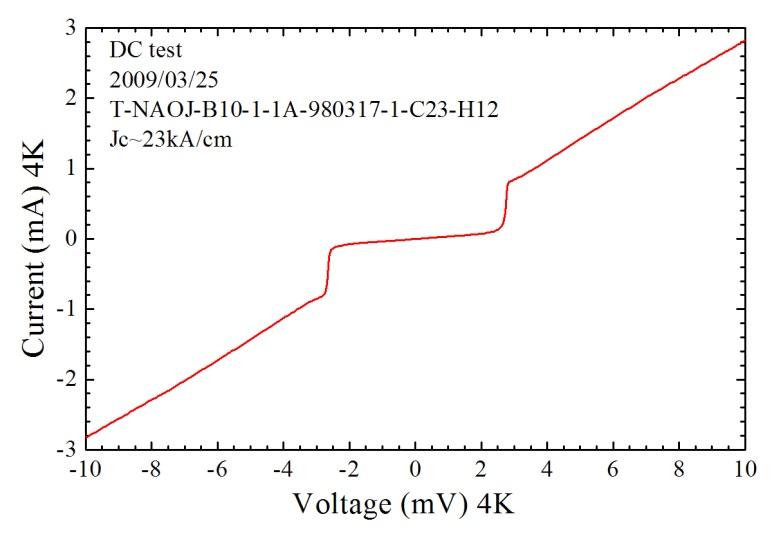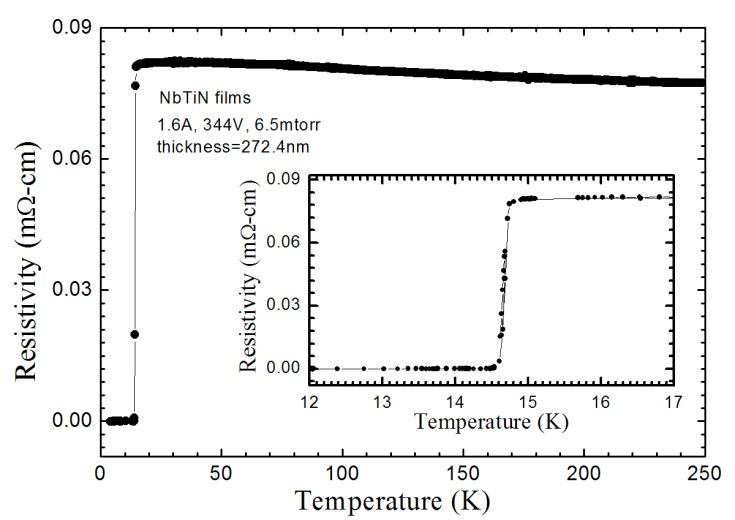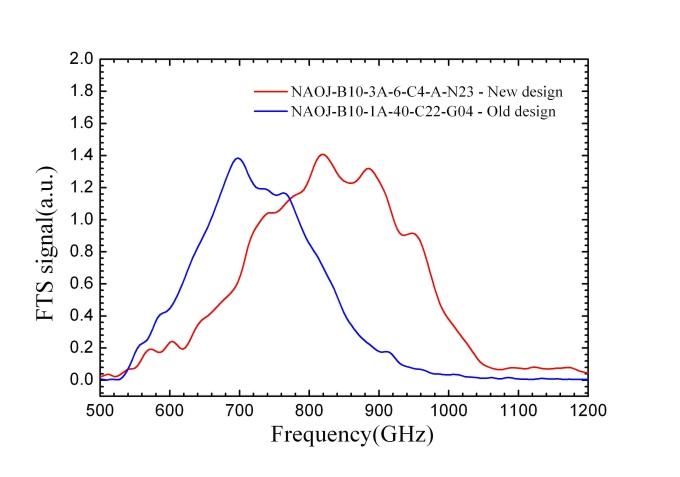|
Home \ Instrumentation ALMA Taiwan \ Band-10 Mixer Development
Band-10 Mixer Development
ASIAA has been working on the highest frequency (950 GHz) receiver band (Band 10), in collaboration with Japan, particularly focusing on the mixer design and fabrication. Both SMA-type and NAOJ-type mixers have been successfully fabricated in IAA and tested in 2006. The SMA-type mixers suffer from a cooling problem while the NAOJ-type mixers showed reasonable results. At the end of 2006, the laboratory moved into a new facility with newly constructed clean rooms (class 10K of 45 m2 and class 1K of 16 m2). Fabrication Processes have been recovered in early 2007.
The baseline requirement for ALMA calls for four receiver bands (85, 115, 230, and 690GHz). Band 10 (890GHz) is defined as an important upgrade in the second phase operation. Japan and ASIAA are collaborating on the mixer chip developments for band 10, with two groups in Japan, NAOJ and NICT. The band-10 team has demonstrated the capability to fabricate a band-10 mixer. The preliminary design review (PDR) of ALMA band-10 was held in 2008 with some concerns on the bandwidth of the mixer performance. The critical design review (CDR) was passed on September 1, 2011. However, the number of qualified mixers is still not enough because of very tight specifications. The band-10 team needs to prepare more qualified mixers in the production phase.
We developed the band10 mixer for ALMA-J in parallel. According to the recommendation of PDR, we concentrated on high Jc junction in the early phase to enhance the bandwidth of mixers. We have successfully fabricated high quality junctions with Jc higher than 20kA/cm2 using AlN barrier, as shown in Figure 1. However, the reproducibility of this process is low. After discussing with NAOJ's band-10 development team, we decided to concentrate on fabricating mixers with the same structure as the NAOJ team starting in the middle of 2009, aiming to be an alternative source. In 2011, some good mixer chips have been achieved, but their response frequency is lower than ALMA specifications because of the mixer design. A new design was used to increase the response frequency. The FTS (Fourier Transform Spectroscopy) results demonstrate that some mixers have the right frequency coverage following ALMA band-10 specifications, as shown in the left of Figure 2. However, their junction qualities are degraded and their performances, receiver noise temperatures, cannot meet the ALMA specification. The best RF performance of our mixer can cover about 70% of ALMA specification, as shown in the right Figure 2.
 Figure 1. High quality junction with a critical current density above 20kA/cm2.
Figure 1. High quality junction with a critical current density above 20kA/cm2.
The AlN barrier is grown by exposing clean Al surface to nitrogen plasma.
Figure 2. The RF performances of band-10 mixers with different designs. Left: FTS response demonstrates the RF response of mixer chip shift from 600-850GHz (old design) to 700-950GHz (new design) which covers the ALMA band-10 RF frequency specification.
Right: The receiver noise temperature of the best mixer. The performance of this mixer, tested by NAOJ team, can cover about 70% of ALMA band-10 specifications.
The ALMA band-10 project is in pre-production phase. A second source is still important to secure the success of the ALMA project. We have spent a lot of efforts on fundamental studies to understand the reasons of junction degradation. We found that the junction quality is dependent on the stress of Nb deposited on the NbTiN surface, which is quite different from the result on quartz surface. Lower stress of Nb seems better for getting higher junction quality. We will continue developing band-10 mixers by using our facilities. In addition, we will continue providing high quality NbTiN film which is the base of band-10 mixers. NAOJ does not have a facility to prepare NbTiN films. They rely on NICT and our institute to provide films for their device fabrication. Typical R-T curve of our NbTiN film is shown in Figure 3. The superconducting transition is above 14.5K and the residual resistivity before transition is below 100 microohm-cm, which meets the request of the NAOJ band-10 fabricating team.
 Figure 3. Typical R-T curve of NbTiN films. The superconducting transition is
Figure 3. Typical R-T curve of NbTiN films. The superconducting transition is
above 14.5K and residual resistivity above transition is below 100 microohm-cm.
|
 asiaa.sinica.edu.tw | Privacy and Security Policy
asiaa.sinica.edu.tw | Privacy and Security Policy






